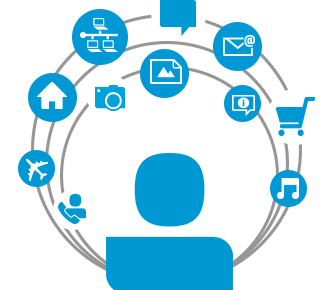Towards a ‘Composable Infrastructure’

There’s a vintage Saturday Night Live skit in which cast members argue over whether a new product called "Shimmer" is a floor wax or a dessert topping. “New Shimmer, it’s a floor wax. No, it’s a dessert topping. It’s a floor wax. It’s a dessert topping!” Chevy Chase bursts into the frame and says, “Calm down you two, new Shimmer is a floor wax AND a dessert topping!”
Today, we’re hearing similar discussions about "composable infrastructure," with one vendor saying it’s a new generation of servers and another saying it’s new software. "It’s a server. No, it’s software. No, it’s a server…." Maybe it’s also a dessert topping? The truth is, while everyone is talking about composable, very few are actually building it.
Let’s take a step back from the confusion and hype surrounding a great idea: Composable infrastructure isn’t just the latest incremental improvement in server design or software controls. Rather, it’s a new take on infrastructure—a new datacenter architecture designed to promote a new, operationalized way of doing business.
Here's the problem: IT is becoming schizophrenic. Traditional applications that run your business (enterprise resource planning, collaboration, databases) run in an environment where change is infrequent and the objectives are reliability and stability. New applications (mobile, Internet of Things, cloud-native apps) that drive personalized customer experiences and generate new revenue operate in an environment where change delivery is continuous and all elements of infrastructure (compute, storage, network) are deployed on demand.

HPE's Paul Miller
That forces enterprise IT to operate as two separate entities, offering a stable virtualized environment for traditional applications while either going to the public cloud or creating a second infrastructure on-premises to support new mobile and cloud-native apps. We call this "hybrid" or "bi-modal" IT, and some analysts think it’s the future of the datacenter. That accounts for two sets of infrastructure, two sets of operational practices and tons of complexity.
So how much value does it really add to your business if your new servers can provide a disaggregated pool of memory but you still have to manually connect them to SAN storage? How does an incremental change solve this problem?
The answer is, it doesn’t. This is why true composability is not just about disaggregating resources on servers; it’s about disaggregating and abstracting all infrastructure resources. It’s not just about creating a new software-defined feature. It’s about provisioning and managing workloads using software-defined intelligence and application code.
What it really comes down to is enabling a developer to create a simple line of code that says, “I want this amount of resources to manage my applications. Give me the right amount of compute, the right amount of storage, the right amount of fabric, configured this way.” That’s what composable infrastructure is all about: making infrastructure truly programmable so that you get the infrastructure you need through a single line of code.
For an infrastructure to be composable, it must be built on three layers of architecture:
- Fluid resource pools—pools of compute, storage and fabric resource that can be continually aggregated, disaggregated and composed based on the needs of the application;
- Intelligent software—programmable and template-driven software intelligence that provides self-discovery and self-healing capabilities, allowing your hardware to take care of itself without a need for dedicated system administration;
- A single unified API—one simple and open API for controlling infrastructure (compute, storage and fabric) that can plug into other programming elements.
The combination of these three architectural layers working together is what defines composability. Anything less may provide some composable features but will not meet the demands of both traditional and cloud-style, agile computing from a single infrastructure.
Think of it as a set of flexible building blocks that can be dynamically and automatically assembled and re-assembled to meet changing workload needs. One analyst described it this way: "It’s as if a child’s set of Lego bricks came with the ability to replicate blocks as needed—and programmed in instructions to configure themselves into a Ninja temple today and a working race car tomorrow."
Composable infrastructure has the unique ability to run without being limited to one computing paradigm because it can run virtual machines, bare-metal deployment, containers and cloud-native applications. It can run anything and store anything. This allows IT to align around a single set of operational practices, reducing complexity and cost in the datacenter.
Through integration with tools like Chef, Puppet, Ansible and Docker, developers can provision and control bare-metal resources from their applications, giving them infrastructure-as-code and enabling continuous delivery.
Think of it as the Holy Grail of DevOps, providing the ability to quickly deliver changes to applications and infrastructure on demand.
All of this adds up to more flexibility in the datacenter, faster time to value whether delivering upgrades to a traditional ERP platform or deploying a new cloud-native application while promising to lower the cost to deliver the IT services necessary to grow a business.
So, forget about the floor wax and the dessert topping. Those are just distractions. A truly composable infrastructure provides a new architecture designed to manage the needs of both styles of IT with a single infrastructure.
--Paul Miller is vice president of marketing for converged datacenter infrastructure at Hewlett Packard Enterprise.
Related
George Leopold has written about science and technology for more than 30 years, focusing on electronics and aerospace technology. He previously served as executive editor of Electronic Engineering Times. Leopold is the author of "Calculated Risk: The Supersonic Life and Times of Gus Grissom" (Purdue University Press, 2016).











